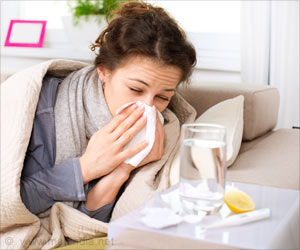Is coronavirus seasonal? Common coronaviruses are highly seasonal, with most cases peaking in winter months.

‘Is coronavirus seasonal? Common coronaviruses are highly seasonal, with most cases peaking in winter months.’
Read More..




The authors of the study, has been accepted for publication in Journal of Infectious Diseases, say it's not possible to tell whether the severe acute respiratory syndrome coronavirus 2. Read More..
(SARS-CoV-2) that causes COVID-19 also behaves like this but hope their findings will help better prepare for what's yet to come in the pandemic.
"Even though the seasonal coronaviruses found in Michigan are related to the COVID-19 virus, we do not know whether that virus will behave in the future the way these seasonal viruses behave," said Arnold Monto, the Thomas Francis Collegiate Professor of Epidemiology at the U-M School of Public Health. "Only time will tell if SARS-CoV-2 will become a continuing presence in the respiratory infection landscape, continue with limited circulation as with MERS, or like SARS, disappear from humans altogether."
The research team notes that while coronaviruses have long been recognized as human respiratory pathogens, human coronaviruses have historically been detected in mild respiratory illnesses, unlike animal coronaviruses that have been associated with severe disease in their respective hosts. Severe Acute Respiratory Syndrome (SARS) in 2002 and of Middle East Respiratory Syndrome (MERS) in 2012, were both caused by a coronavirus of animal origin, as is the current COVID-19 pandemic.
For their study, researchers used data from the Household Influenza Vaccine Evaluation study, an ongoing longitudinal investigation of respiratory illnesses in households with children in the Ann Arbor area. For the last 10 years, between 890 to 1,441 individuals from 209 to 340 households participated in the study. The continuing study is now tracking the occurrence of SARS-CoV-2 and its potential involvement in Michigan households.
Advertisement
- When year-round surveillance was in place, most coronaviruses cases were detected between December and April/May, and peaked in January/February. Only 2.5% of the cases occurred between June and September.
- Highest infection frequency was in children under 5 years of age.
- Of the 993 infections, 260 were acquired from an infected household contact.
- Serial intervals between index and household-acquired cases ranged from 3.2 to 3.6 days; secondary infection risk ranged from 7.2% to 12.6% by type.
- Overall, 9% of adult cases and 20% of cases in children were associated with doctor visits. On average, 30% of influenza cases required a doctor visit.
- Illnesses in children less than 5 years old and those over 50 years of age were more likely to be classified as severe.
In a separate ongoing study, the researchers are using the samples collected before the SARS-CoV-2 pandemic emerged to look at community introduction of that virus. Preliminary results show no evidence that the novel coronavirus was present in the community before March, they say.
Advertisement















